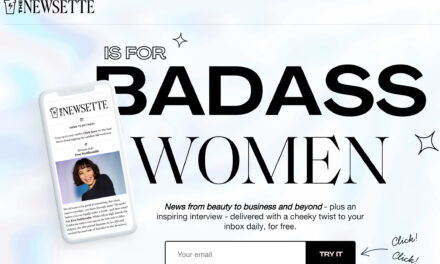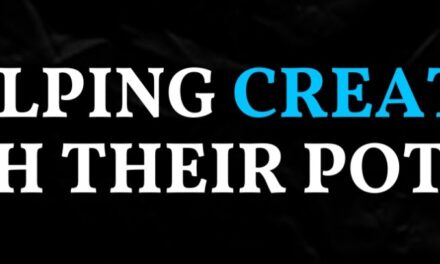The Ebook Equation
Freemium can be applied successfully to a variety of products-especially ebooks, experts say.
In the ebook arena, many publishers today sell access to installments of unending works. Authors upload chapters that readers can sample for no charge or view completely for a fee. Other publishers, including the Big Six, often provide a complimentary ebook version in the hopes that readers will buy the hardcover or paperback edition. Many writers, among them Seth Godin and Chris Anderson, have been longtime proponents of this latter practice.
Nick Van Weerdenburg, senior product marketing manager for North Plains Systems Corp, a Toronto-based digital asset management provider, says publishers of self-help, nonfiction, tutorial, and educational content can particularly benefit from the freemium approach. This is largely because the stand-alone, complete pieces of content they produce are often perceived as having more value than articles, books, installments, or “cliffhangers” that only offer excerpts of the complete text.
“Topics like marketing, sales, business, technology-even gardening-can engage audiences who have particular needs. They’re out there actively looking for this type of content,” he said. “And the ability for that free content to be referenced, shared and reused will add value to it and make it stick longer with that person. A certain percentage of your readers will convert (to paid premium content), while others won’t.”
Deborah Emin, self-publishing author and owner of Sullivan Street Press, however, is not a freemium fan. “It appeals to a trend in digital publishing that I think is damaging to the whole industry,” says Emin. “I’m hoping that self-published writers will begin to understand the business models for publishing better and learn to not undersell their own work.”
Emin previously dabbled with freemium in promoting her books, but she was unsatisfied with the results. “It did generate a number of replies,” she says, “but we were not able to then use those emails to generate further sales.”
Above all, “You need to know if you can afford to give the content away,” says Emin. “If so, and making money off that content isn’t your primary business, then (freemium) might work. But I don’t see it as viable for those who are in the business of selling quality fiction.”
Supplementing With Social Media
The explosion of social media in recent years hasn’t changed the freemium model, but Facebook, Twitter, YouTube, blogs, and other social networking tools provide publishers a vehicle to expose their content to wider audience through sharing, says Tinsley.
“This can, for example, help a paywall adoption to take place more rapidly,” Tinsley says.
Social media adds more value to freemium content and allows that content “to scale faster,” Van Weerdenburg says. “Take YouTube, for example,” he adds. “If you have video content that’s popular and referenced, then that content becomes much more powerful as a tool for reaching your audience.”
Abel agrees, calling social media a tool that can “amplify the message for you and create exponential exposure. It can help you gain more audience and provide another source of content you didn’t create yourself.”
Before Taking the Freemium Plunge
Unlike the old days, applying a freemium strategy now requires a lot of planning and research prior to giving away freebies, says Yan.
“Companies need to carefully examine what to offer for free, and the free products should be attractive enough to have their customers pay for a full version at some point,” Yan says. “But you need to make sure there is still space for product upgrading so that customers don’t get disappointed after paying.”
Before jumping into freemium, Victor says publishers need to answer several questions:
- Will it be easy to segregate content or features?
- What is the full value of this offer?
- Is the free version good enough to be “sticky”? If so, can you make the transition a “logical” choice for the user to encourage the upsell to premium content?
- What is your migration path-is the content compelling enough to drive readers to transition from free to fee?
- Should you offer rewards for referrals?
There are two freemium criteria that Froberg says publishers must abide by: 1) Your company must have the ability to create a no-charge product that can reach a large audience; and 2) you have to create complimentary products that can be upsold off the free product.
Froberg also recommends avoiding the need for greed. “Companies often try to squeeze as much profit out of [their products] as possible,” he says. “They think that if people are happy using the free product, there must be profit left on the table, but it’s actually the other way around. Freeloaders are a good thing in this model. Those who convert from free to premium can also [refer the free product to friends] and create buzz around the product. When the marginal cost of each free user is very low, freeloaders contribute with more [than] they cost.”
Additionally, proper freemium “packaging” is crucial. “Think of each piece of content you produce as a product that solves a problem, and package it appropriately for that purpose, so that when someone finds your freemium content, they know exactly what they’re getting,” says Van Weerdenburg.
Lastly, be sure you have the necessary digital marketing, public relations, and social media support to back your freemium products, Van Weerdenburg says.
“If you can ensure good search results on your (freemium) content and deliver value with that content, you stand a better chance of succeeding,” he says.
Chris Anderson
Aria Systems, Inc.
The New York Times
North Plains Systems Corp.






